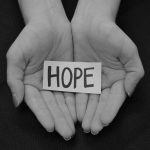It’s A Beautiful Day in the Neighborhood
Contributing to Social Cohesion in A New Community
By Sirajah Raheem, Senior Trainer
ecently, I relocated with my husband and my dog to Philadelphia, Pennsylvania from Northern Virginia. I’ve lived and labored in the South all of my life. I love the people, I love the land, and I want to eventually be a fixture in the South’s rich cultural traditions and development. For now, we’re on an adventure to the North. A lot can change from one state to the next when traveling a short distance or crossing the invisible border between North and South. I’ve found that my culture, or the mix of cultures, that I’m coming from is very different from the culture (also a blend of cultures) that I live in now. I learned pretty quickly that it was not a norm to say hello to everyone that I make eye contact with on the street. I also learned pretty quickly that a norm I’d previously localized to my family and culture, talking loudly and expressively, is a community norm in South Philly, even with all of the cultures that the neighborhood contains. I stopped getting up to peer out the window and make sure that everyone was all right pretty quickly.
I try to form bonds with my surrounding community depending on the city, usually through my work, through supporting community organizing efforts, through civic participation, and building informal relationships with my neighbors. I make that effort for a number of reasons. First, I like to know my neighbors. It increases my feelings of belonging if I pass people who’ll greet me as I walk home, or will tell me about the ornate outward facing window display in their home, or will join me in the park to play a popular location-based game on our phones. Second, building bonds with my neighbors allows me to participate in advocating for the needs of the neighborhood at the community-level and at the societal-level. Lastly, I get to know my neighborhood and my neighbors in order to contribute to social cohesion. All of these choices contribute to a safer community and a decrease incidences of power-based personal violence.
There are protective factors for power-based personal violence that individuals can bolster at the community-level of the social ecological model. And some of the ways that we participate in our community can directly counter risk factors. Risk factors for power-based personal violence (e.g. child maltreatment, sexual violence, dating/domestic violence, and stalking and other forms of violence not listed here) include but are not limited to: low self-esteem; social isolation of families; community violence; low levels of community participation; lack of institutional support from police and judicial system; and high tolerance levels of crime and other forms of violence. Protective factors include: emotional health; adequate housing; caring adults as role models or mentors; and connectedness with those in the community, including school and church. Even new members of a community, like me, can have an influence on the protective factors that keep a community safe.
So, how does one identify civic participation that also contribute social cohesion and a safe community?
- Talk to strangers (like a Southerner). One of the easiest ways I gather information about the new neighborhood is by talking to people in the community. In one-on-one conversations with our neighbors we can also ask people what they think the community needs are. Where they see the most improvement. And what they’d want for a new community member to do to contribute. When my barber asks what I do for work I tell him. I don’t say something vague and generic. I tell him exactly what made me start to work in violence prevention and my hope for the future. Surprisingly, my candid responses don’t make people as uncomfortable as one might guess. People are usually candid in return and most people also have hope around this issue. Leading a conversation about prevention in public spaces, even if it’s under the cover of regular salon or barbershop talk, contributes to community norms around this issue.
- Capitalize on your areas of knowledge. It’s hard in a new community to find your place. Rather than trying to learn a whole new skillset, capitalize on the things that you already do well. Use those skills find ways to eliminate the gaps between different segments of society that limit equitable access to resources and opportunity. We know that those gaps contribute to the rates of power-based personal violence. For an example, as a graduate student I was really interested in built environments and housing. When I decided to apply my interest in housing to power-based personal violence prevention I looked for opportunities to volunteer with or donate to organizations that create access to affordable housing for middle and low-income members of the community. Access to adequate housing and housing stability work as a protective factor.
- Adopt social norms, adapt social norms, and challenge social norms. Your community probably has local traditions. My new neighborhood has a rich fabric of traditions and events. As I learn the expectations of my community, some of the traditions are a good fit. Some of the traditions of my neighborhood need to be adapted so that they don’t conflict with my own cultural traditions. And I might find that others might contribute to risk factors for power-based personal violence. As we become a part of a new community we have to consider how and when we want to participate in traditions and how we can highlight the visibility of shared values around violence prevention. I have started to decorate my window for the holidays like my neighbors. For the holidays that I don’t usually observe, I try to add a violence prevention element.
I didn’t realize how much easier getting involved was in places that felt like home. When things are put into a list it makes them seem easier and more doable for sure. In my new community, I’m still learning how to contribute to community cohesion and/or social cohesion. I’ve gone to community meetings. I haven’t found one that felt like a good fit yet, but I’ve met some folks that I think can point me in the right direction. I haven’t met my neighbors on both sides yet. I don’t feel like I have a lot of time to be involved at the moment, but I’d like to do what I can to be a good neighbor. And for me that specifically means finding ways to be involved that make it less likely that people experience violence.






